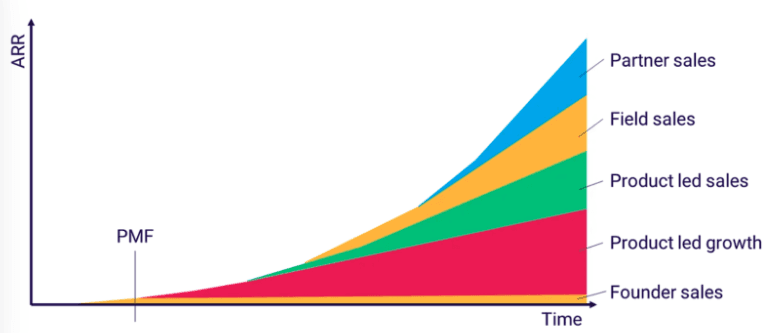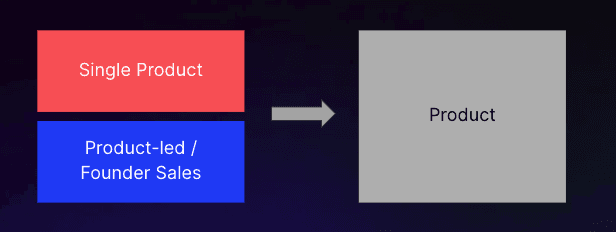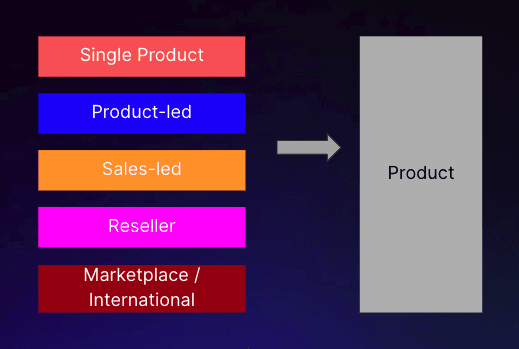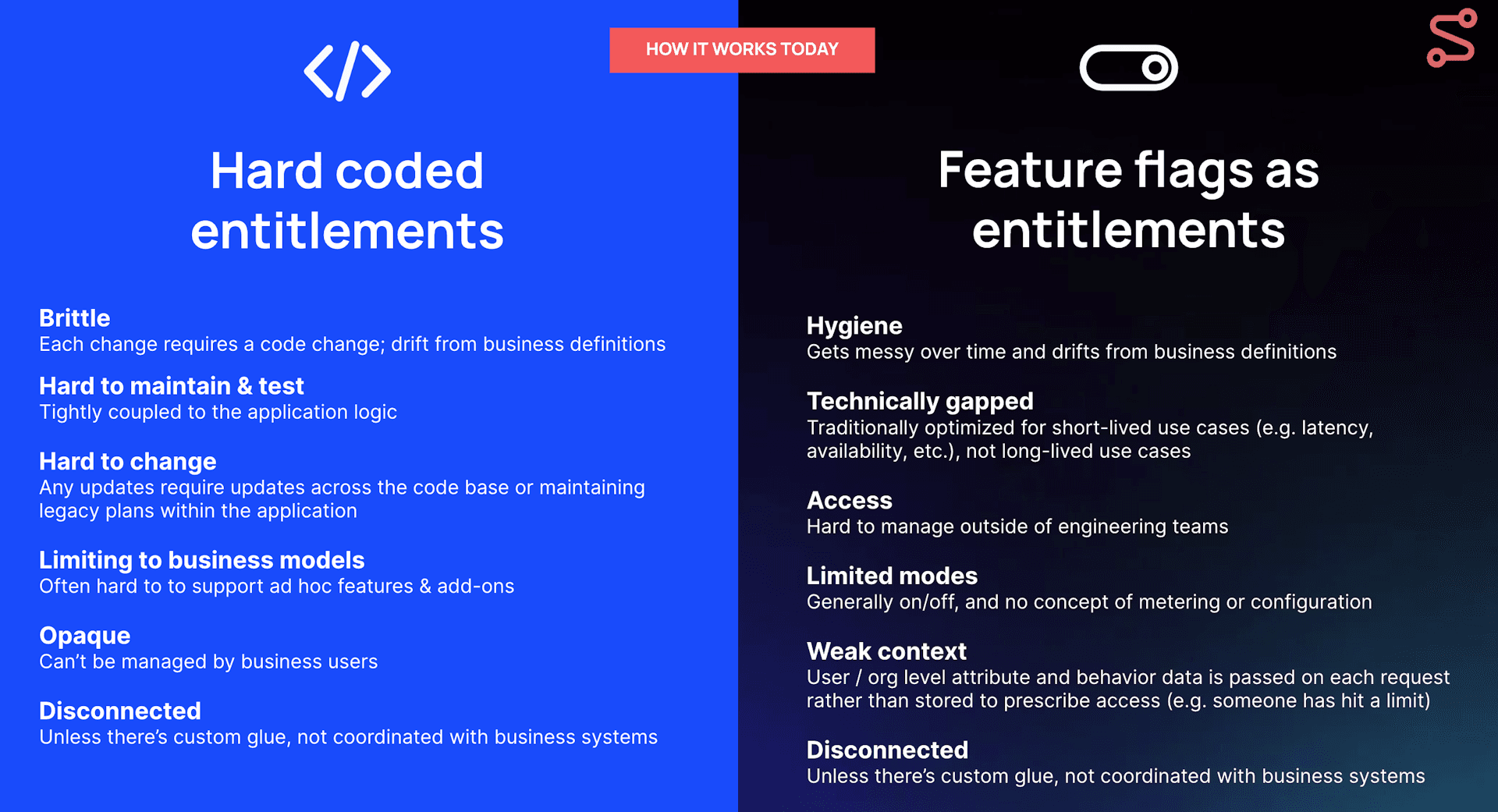We believe we’re in the early innings of an inflection in the way B2B SaaS companies grow, which has taken on a new shape across a spectrum between product-led and sales-led. We call this hybrid go-to-market (GTM).

Hybrid GTM requires that a business change the way its tools interact with its product and the way its product interacts with a customer, which means heavy investments in custom development, stitching a variety of tools together, and begging R&D for support across a brittle interface between ops, marketing, and product.
Early on, the product and pricing & packaging is simple.

But over time, as the business achieves product market fit and introduces new selling motions, it becomes more and more complex to manage the customer’s experience within the product, across customers who were self-service, sold by sales, sold by resellers, international, or purchased via marketplaces.

New sales motions aren’t the only driver of complexity though. Sooner or later, the business introduces new products, new ways to bill, and sells to large customers who require custom configuration.

Why are B2B SaaS companies creating so much complexity? Very simply, they have to. And for three good reasons:
The customer — The B2B SaaS buyer is increasingly empowered and expects to be able to purchase however they prefer to purchase (e.g. self-serve, sales, channel, marketplace, etc). SaaS companies support and invest in multiple sales motions, because it is net beneficial for customers. And it’s not just sales motions they need to support, it’s also hybrid billing models, for instance usage-based billing, combined with seat-based billing.
Product & Pricing — Every day, B2B SaaS companies are spending heavily on R&D to drive new value into the market. Companies must capitalize on this by continuously maturing their pricing & packaging.
The business — After a B2B SaaS business has acquired customers via multiple sales motions and with multiple billing models, it must support & manage the needs of diverse customer cohorts on an ongoing basis, as well as shore things up for reporting & compliance purposes.
Supporting multiple go-to-market motions is challenging for many businesses and leads to a mess of systems and processes.
Every day throughout the lifecycle of a B2B SaaS company, it gets more complex and more expensive to meet the needs of a diverse customer base, and the only real certainty is that there will be more change in the future. There will be new pricing schemes, exceptions for individual customers, initiatives to manage legacy customers and grandfather them into new plans, and on and on.
In our experience, we’ve seen all of this play-out first hand in a variety of ways:
Brittle, homegrown config files that are hard to parse and tenuous to build on top of
Outdated feature flags across the product that lead to CTOs, architects, and VPs trying to resolve customer access issues
Legacy packaging & pricing models strewn across hundreds, if not thousands of vintage customer cohorts
Slow pricing & packaging changes, because to change anything would require too much work across too many systems
Spaghetti code between the product and the billing system, leading to expensive investments in homegrown systems and tedious manual processes to make sure things are billing appropriately and/or are in sync
Customers disappointed by bad onboarding experiences, bad billing experiences, access issues, etc.
The root of all of the above problems is the way entitlements are implemented in the product. Entitlements are generally implemented in two ways, and usually in both ways:

In both cases, what is true is that unless there’s custom glue, changes aren’t coordinated with business systems.
The question we've been asking ourselves is: could you address these issues by formally productizing entitlements?
As we’ve interviewed developers, we’ve consistently heard demand for a reimagined approach to feature flagging that is purpose-built for entitlement flexibility -- in essence, feature management built for the long-haul, for business awareness, for business user utility, and ultimately for enabling the pricing/packaging flexibility that unlocks one of the most severe constraints SaaS revenue growth.
It’s 2023, and it's extremely difficult for SaaS companies to mature pricing & packaging. This complexity and expense is rooted in the way entitlements are implemented in the product. The problem is a feature management problem that stems from the pursuit of meeting the customer where they want to be met. We believe that it must become easier.
We believe that B2B SaaS businesses should be able to define their offering once and have it seamlessly integrated across their stack, including their product, billing system, and website.
We are building an initial product that marches towards that vision, by reimagining feature flagging that is purpose built for entitlement management, and we're excited to help SaaS companies streamline the many jobs to be done associated with this, including customer configuration, enforcing entitlements, to upgrading & downgrading customers, rolling out pricing & packaging changes, managing bulk actions like migrations, enabling engineering and product teams to manage the customer experience with confidence and accuracy.